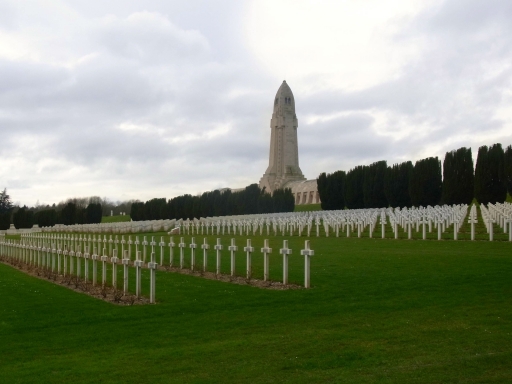The longest battle of the First World War ended at Verdun on 18 December 1916, at a cost of casualty figures running into hundreds of thousands on both sides.
After ten months of fighting, French forces completed their recovery of the much of the ground lost during the German offensives which had threatened their hold on this exposed sector of the Western Front.
Verdun and its fortifications were of major symbolic importance to France, and its armies fought for most of 1916 to save them from capture.
The German army chief, Erich von Falkenhayn, launched his assault on February 21 with the aim of forcing France into a fight which would knock it out of the war, isolating Britain.
Attrition
In his post-war memoirs, Falkenhayn notoriously claimed that the aim of Unternehmen Gericht (Operation Judgement) was to ‘bleed the French army white’ – although it’s now suggested this was justification after the event.
The struggle for Verdun turned into a campaign of attrition for both sides – German losses totalled more than 330,000 dead and wounded, against 378,000 for France.
The battle was to last 300 days, almost until Christmas, on a narrow front stretching no more than 35 kilometres (21 miles).
France suffered an early disaster, losing Fort Douaumont, the biggest of its fortresses protecting Verdun, without a fight on February 25.
The fighting spread to both banks of the River Meuse, seriously threatening Verdun with capture in the summer.
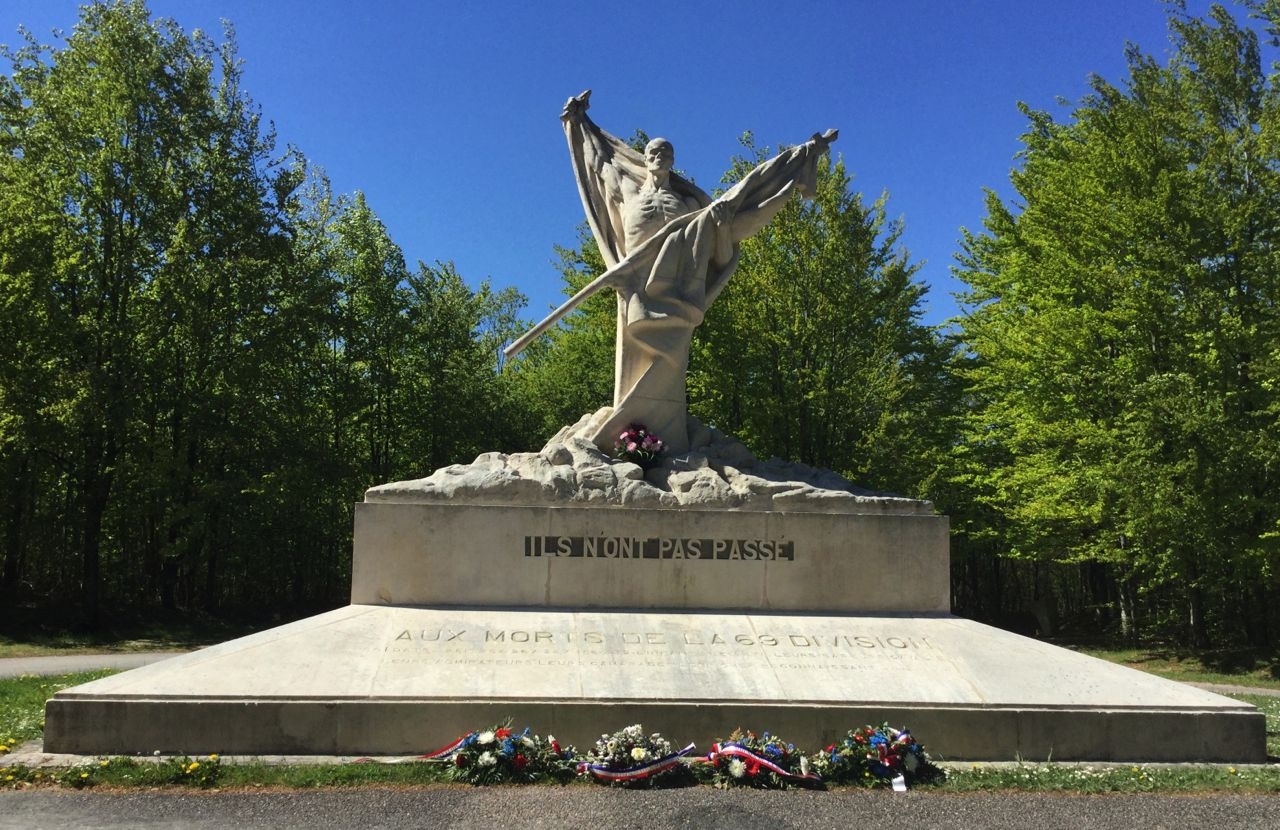
The ‘Skeleton Memorial’ at Mort-Homme, on the left bank of the Meuse, bearing the words ‘They Did Not Pass’ (Photo: Patrick Gregory, Centenary News)
As the German attacks peaked, General Robert Nivelle issued his famous order: “Vous ne les laisserrez pas passer” (you shall not let them pass), a battle cry shortened to ‘on ne pass pas’ or ‘Ils ne passeront pas’ (they shall not pass).
Together with General Philippe Pétain, who’d been brought in to hold the line in February, Nivelle and General Charles Mangin led the French fightback.
The opening of the Battle of the Somme and Russia’s Brusilov offensive forced Germany to divert troops from Verdun.
German forces made their last attempt to take the town on July 11/12 – thereafter, they were on the defensive.
In the first of a series counter-attacks in October, French colonial troops recaptured Fort Douaumont on 24 October 1916, ending an eight-month German occupation.
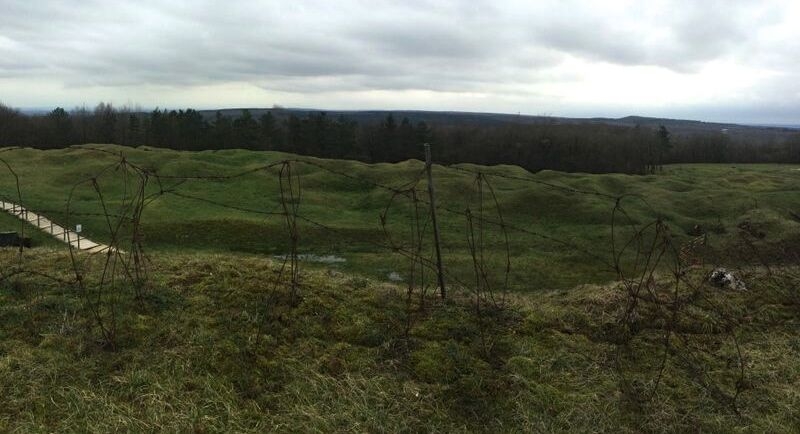 View of the battle-scarred Meuse heights, seen from Fort Douaumont (Photo: Centenary News)
View of the battle-scarred Meuse heights, seen from Fort Douaumont (Photo: Centenary News)
Fort Vaux, lost after a six-day siege in June, was reoccupied on November 3 after being abandoned by the Germans.
The last French assaults, ending on December 18, cleared the area around Fort Douaumont. Although this date is commemorated as the last day of the Battle of Verdun, fighting continued in the region until 1918, notably involving recently arrived American forces in the Meuse-Argonne Offensive.
Verdun, a protracted struggle for every inch of ground with mass casualties, is remembered as one of the defining battles of the Great War.
Forever protected as a commemorative site, the mournful landscapes of the Meuse heights still bear the scars of the fearsome artillery barrages.
The Verdun Memorial Museum, renovated for the 2016 Centenary to include the German perspective, notes: ‘Although it was not the bloodiest of battles (the Battle of the Somme ended with more than one million casualties, including 443,000 dead), it was a dogged struggle, the like of which had never been seen before. It took place over a limited area that was constantly being ploughed up by thousands of shells over 300 days, leaving an indelible mark on the landscape.’
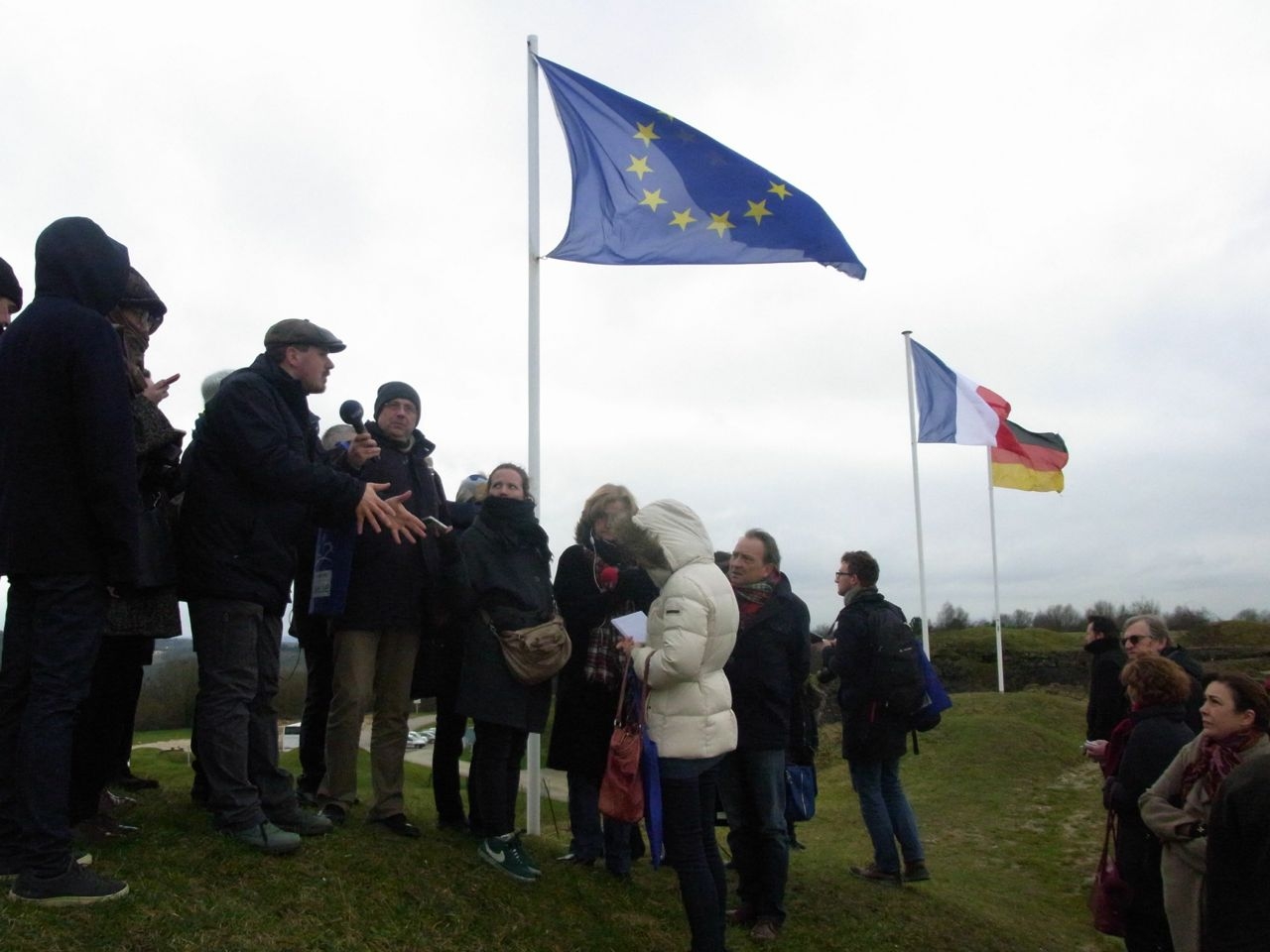
Nicolas Czubak, historian and teacher attached to the Mémorial de Verdun (with microphone), guides journalists through the battle at Fort Douaumont, February 2016 (Photo: Centenary News)
In recent years, Verdun has also become an important symbol of Franco-German reconciliation after decades of suspicion and hostility.
In 1984, French President François Mitterrand and Germany’s Chancellor, Helmut Kohl, joined hands at a ceremony mark the 70th anniversary of the First World War.
The 2016 centenary commemorations at Douaumont on May 29 were jointly led by their successors, Chancellor Angela Merkel and President François Hollande.
Commenting on the Centenary, Germany’s Ambassador to France, Nikolaus Meyer-Landrut, said: “We all bear responsibility for ensuring that the memory of these dark times in our mutual history passed on to the next generations.”
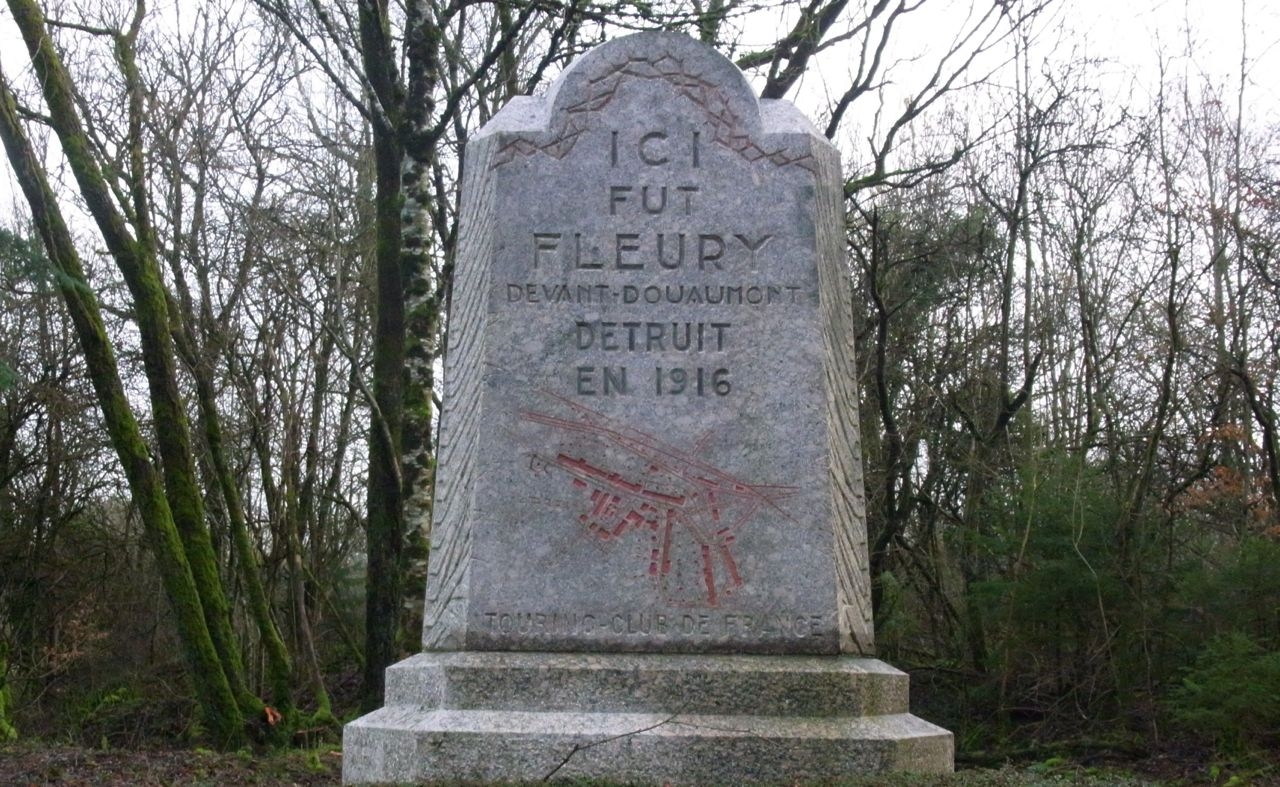 Nine villages, among them Fleury devant Douaumont, were destroyed and have never been rebuilt. They were declared to have ‘died for France’ (Photo: Centenary News)
Nine villages, among them Fleury devant Douaumont, were destroyed and have never been rebuilt. They were declared to have ‘died for France’ (Photo: Centenary News)
Verdun damaged the reputations of the German and French military leaders. Erich von Falkenhayn was dismissed in August 1916 as the campaign faltered. His French counterpart, General Joseph Joffre, was ousted in December. His successor was Robert Nivelle, the General credited with master-minding the successful counter-offensives at Verdun.
Centenary News reported from the reopening of the Mémorial de Verdun Museum in February 2016.
Sources: Mémorial de Verdun/Wikipedia
Reporting by CN Editor Peter Alhadeff
Images: Centenary News, Patrick Gregory (Skeleton Memorial)
